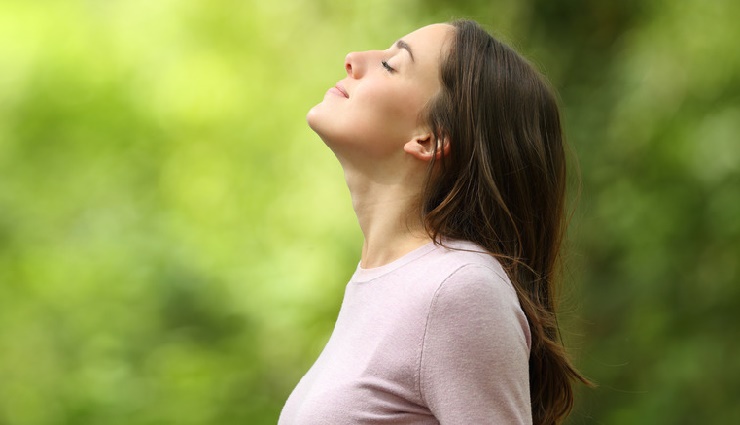If you are usually stressed or anxious, you can calm yourself down by doing some breathing techniques. These techniques are straightforward to use. All you need is a quiet space to focus on your breathing. In the following, we have explained ten breathing techniques and the steps to perform them.
Time to do breathing exercises
Breathing exercises don’t take much time; you must focus on breathing.
- Start with just 5 minutes a day and increase the time of the exercises as they become more accessible and more comfortable.
- If 5 minutes is too much time, start with 2 minutes.
- Do the exercises several times a day. Set specific times for activities or practice conscious breathing whenever needed.
1. Pursed lip breathing
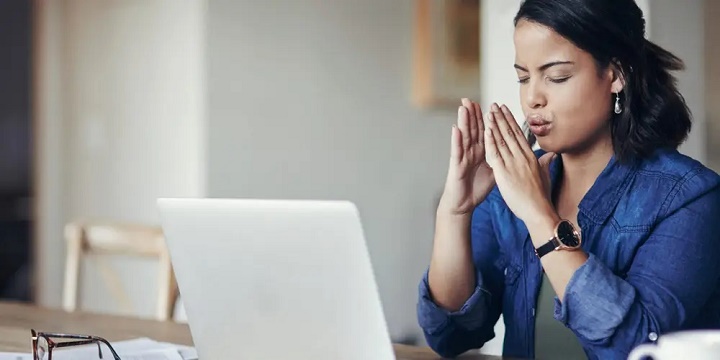
This simple breathing technique makes you consciously slow your breathing with each breath. You can do this breathing exercise anytime. This exercise is beneficial when bending, lifting, or climbing stairs.
- Relax your neck and shoulders.
- Keep the mouth closed and slowly inhale two counts of air through the nose.
- Pucker the lips into a whistle.
- Exhale slowly by blowing air through the lips to the count of 4.
2. Diaphragmatic breathing
Diaphragmatic breathing, also called abdominal breathing, makes you use the diaphragm correctly. According to a 2020 meta-analysis, this type of breathing is especially beneficial for people who have breathing problems due to chronic obstructive pulmonary disease ( COPD ), heart problems, or cancer.
Diaphragmatic breathing is also helpful in reducing stress and solving problems related to eating disorders, constipation, high blood pressure, migraine attacks, and other health problems. Practice diaphragmatic breathing 3 or 4 times a day for 5 to 10 minutes each time. In the beginning, you may feel tired, but over time, doing this breathing technique will become more accessible and more natural for you.
- Lie on your back, bend your knees slightly, and rest your head on the pillow.
- For more comfort, you can put a pillow under your knees.
- Place one hand on the upper part of the chest and the other under the chest to feel the movement of the diaphragm.
- Breathe slowly with your nose and feel your stomach pressure with your hand.
- Hold the other hand steady.
- By contracting the abdominal muscles, let the air out through the pursed lips and keep the upper hand still.
You can place a book on your stomach to make the exercise harder. Once you’ve learned how to do abdominal breathing while lying down, you can increase the difficulty of the movement by doing it while sitting on a chair. You can then practice this technique as you go about your daily activities.
3. Breath focus technique
This deep breathing technique uses images or focus words and phrases. You can choose a word that makes you smile, feel, relax, or use a neutral expression. For example, you can use words like relaxation or letting go. You should focus on this word and repeat it during the practice. You can start with a 10-minute session. Gradually increase the session duration until it reaches at least 20 minutes.
- Sit or lie down in a comfortable position.
- Focus your awareness on your breath without trying to change how you breathe.
- Do regular and deep breathing several times. Note any differences between normal and deep breathing. Notice how your belly expands with each deep breath.
- Notice the difference between shallow and deep breaths.
- Practice deep breathing for a few minutes.
- Place one hand under the navel, and while relaxing your stomach, notice how it rises with each inhale and goes down with each exhale.
- Sigh with each exhalation.
- Practice focused breathing by combining deep breathing with imagery and a focus word or phrase that promotes relaxation.
- Imagine that the air that enters your lungs with your breath brings waves of relaxation and relaxes your entire body.
- Imagine that the air you exhale with your exhalation removes tension and anxiety from your body.
4. lion’s breath

Lion breathing is an energizing breathing exercise in yoga that reduces tension in the chest and face. This exercise is called lion pose in yoga and Simhasana in Sanskrit.
- Sit in a comfortable position. You can sit on your heels or all fours.
- While spreading the fingers, press the knees with the palms of the hands.
- Take a deep breath through your nose and open your eyes.
- At the same time, open your mouth entirely, sti,ck out your tongue and move the vocabulary tip down towards the chin.
- Contract the muscles in the front of the throat as you exhale, making a long, drawn-out “haaaaaah” sound.
- You can look at the space between your eyebrows or the tip of your nose.
- Do this exercise 2 or 3 times.
5. Intermittent breathing through the nostrils
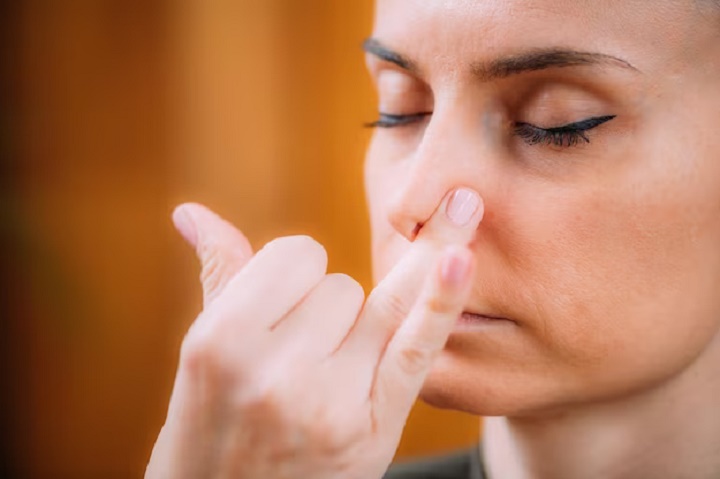
Intermittent breathing through the nostrils, called Nadi Shodhana Pranayama in Sanskrit, is a breathing exercise for relaxation. This breathing improves cardiovascular function and reduces heart rate. It is better to do this exercise on an empty stomach. Do not do this exercise if you feel sick or have a stuffy nose. During the training, you should have smooth and uniform breathing.
- Sit in a comfortable position.
- Take your right hand towards the nose, bring the index and middle fingers to the palm, and keep the other fingers stretched.
- After exhaling, gently close the right nostril with your right thumb.
- Breathe through the left nostril. Then, close the left nostril with the right hand’s little finger and ring finger.
- Remove the thumb from the nostril and exhale through the right nostril.
- Breathe through the right nostril and then close this nostril.
- Remove your fingers from the left nostril and exhale through the left nostril.
- Do this breathing exercise for 5 minutes.
- End your training session by exhaling through the left nostril.
6. equal breathing
The same breathing technique is called Sama Vritti in Sanskrit. In this breathing technique, the length of inhalation and exhalation should be the same. Smoothing and smoothing the breath can create balance and relaxation. By examining older adults with high blood pressure, it has been found that this technique is effective to some extent in improving mental health and increasing oxygen supply to the brain and lungs.
Finding a breath length that is neither easy nor hard would be best. Also, your breaths should not be very fast so that you can maintain their speed during the exercise. The size of breaths is usually 3 to 5 numbers. Once you get used to breathing evenly while sitting, you can practice it during your yoga practice or other daily activities.
- Sit in a comfortable position.
- Inhale and exhale through the nose.
- Count during each inhalation and exhalation to ensure they are the same length. You can also repeat a short word or phrase during each inhale and exhale.
- If you don’t feel uncomfortable, you can pause to hold your breath after each inhalation and exhalation. (In normal breathing, we stay after inhaling and exhaling.)
- Do this exercise for at least 5 minutes.
7. Resonant or coherent breathing
In resonance breathing, also called coherent breathing, you breathe at a rate of 5 full breaths per minute. You can reach this speed by inhaling and exhaling as many as five numbers. Living at this rate maximizes heart rate variability (HRV), reduces stress, and, according to a 2017 study, can reduce symptoms of depression when combined with Iyengar yoga.
- Do five reps.
- Exhale for five counts.
- Continue this breathing pattern for at least a few minutes.
8. Sitali breath
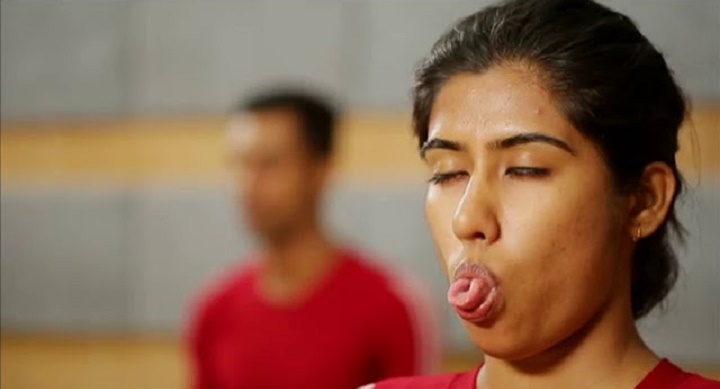
This yoga breathing exercise helps lower the body temperature and calm the mind. In this exercise, you should make your breath a little longer, but don’t push yourself. Since you breathe through your mouth in detail breathing, it is better to do this exercise in a place free from allergens and air pollution.
- Sit in a comfortable position.
- Stick out your tongue and curl it so that the outer edges meet.
- If you can’t do this, purse your lips to make it easier.
- Inhale through the mouth and exhale through the nose.
- Continue breathing in this way for 5 minutes.
9. Deep breathing
Deep breathing makes it easier to relieve shortness of breath by preventing air from remaining in the lungs and helping fresher air enter the lungs. Deep breathing may also help you feel more relaxed and focused.
- In a standing or sitting position, move the elbows slightly back to open and expand the chest.
- Take a deep breath through your nose.
- Hold your breath for a count of 5.
- Exhale slowly through your nose.
10. Bhramari (Bhramari)
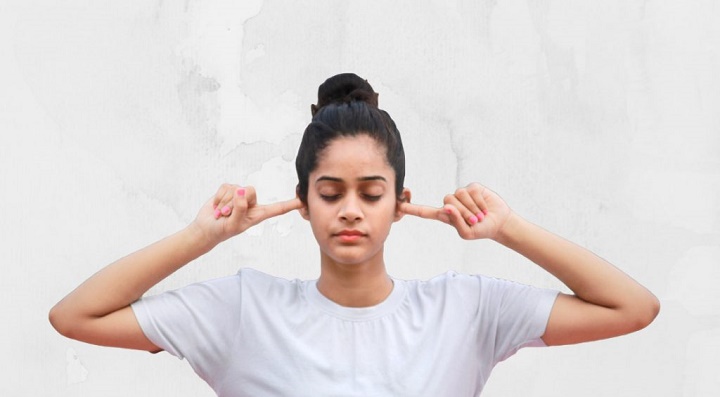
The unique sensation that comes from this yoga breathing exercise is beneficial for instant relaxation and is incredibly relaxing around the forehead. Some people use bee breathing to reduce frustration, anxiety, and anger. According to research, this exercise reduces the heart rate and the feeling of irritability or stress and causes clearer thinking. Doing this exercise where you can easily make a bee sound would be best.
- Sit in a comfortable position.
- Close your eyes and relax your face.
- Place the index fingers on the tragus cartilage, which partially covers the ear canal.
- Inhale, and while exhaling, gently press the fingers on the cartilage.
- While keeping your mouth closed, make a loud buzzing sound.
- Continue this exercise as long as you can.
final word
If you have any health problems or are taking medication, consult your doctor before doing these exercises. If you want to learn more about breathing exercises, you can see a respiratory therapist or yoga instructor specializing in breathing exercises. If you feel any discomfort or distress, stop doing these exercises.
Warning! This article is only for educational purposes; to use it, it is necessary to consult a doctor.
